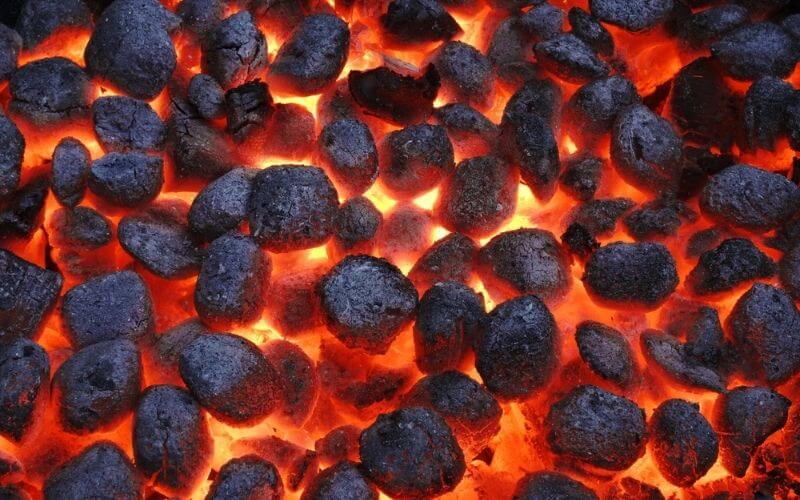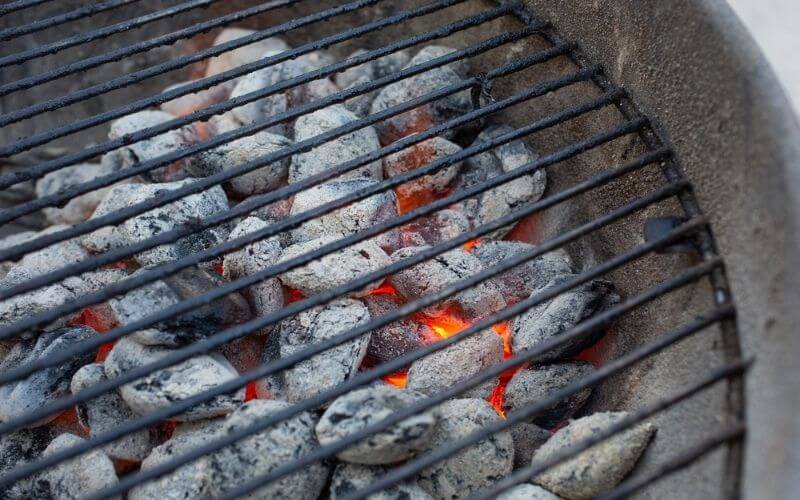Remember the time when all the built-in gas grills came with their own set of lava rocks? Those days are gone. Now you can hardly find lava rocks in any grills. Ever wonder why we all just stopped using them?
There is no doubt that lava rocks are amazing at creating the most delicious smoked briskets and stakes. They are a natural ingredient that seems like a better environmental choice as well. So why don’t gas grills use lava rocks anymore?
Before we find out the answer, let’s take a look at what lava rocks really are.
What are Lava Rocks?

The name itself is pretty self-explanatory. Lava rocks are a type of volcanic rock that is found after volcanic eruptions.
Once the lava cools down, they turn into these hard pieces of rocks that can retain tons of heat. For this reason, they have been used for baking and grilling for centuries.
As they are formed through the solidification of molten lava, they are very porous in nature. These stones are super durable and strong. Lava rocks can retain tons of heat too. And why wouldn’t they? They are born from magma!
Why Were Lava Rocks Used in Gas Grills?
Lava rocks can hold a lot of heat compared to any other type of rock. They heat up very fast and can reflect heat from a propane grill. This makes barbecuing very easy.
Traditionally, lava rocks were used on gas grills. As they get super heated-up, when the fat from the meat drops down into them, it creates smoke and adds a rich flavor to the food. Lava rock cooking was a really popular way to grill different types of meat and veggies.
The smokiness you get from lava rocks is very intense and unique. They make any type of meat super delicious. This is the reason why it was so popular to use. However, using them for gas grills was no easy task.
Why Don’t Gas Grills Use Lava Rocks Anymore?

Modern technologies have created better alternatives and inventions that make grilling very easy and fast so we don’t need to use lava rocks anymore. Apart from that, lava rocks have their own set of drawbacks that makes us not want to go back to them.
Health Concerns:
If you are someone who loves to barbecue very frequently, using a gas grill with lava rocks can result in serious food poisoning. This is because the stones can harbor bacteria and even mold.
The appeal of lava rocks is the smokiness you get from using them on any type of meat. This happens because the meat drippings and fat falls straight into the hot rocks and forms smoke. The smoke flavors the meat.
As much tasty as the meat gets, the bacteria and molds inside the rocks tend to come into contact with the meat as well. So not only are you getting a roasted flavor, but you also get exposed to many different health risks with it.
Most people develop serious stomach issues. So instead people now use gas grill ceramic briquettes. We will talk about them in a moment.
Hygiene Issues:
You might be wondering why bacteria or mold would grow on lava rock grills. Well, this is due to the nature of the grill itself.
In modern gas grills, all the fat drips into a tray. As lava rocks are very porous, the drippings get absorbed by the stones.
So even after burning the rocks for hours, there is still moisture and fat left on them. What happens when moisture and fat get exposed to open air? They start to get moldy.
This problem would be easily avoided if we could clean the lava rocks after each use. But cleaning them is not an easy task as you can not use any liquids. Not even water is allowed to clean lava rocks.
And even if you do, there needs to be a long drying process before you can use them to their full glory again. Who wants to do so much work only to make a few hamburgers?
Excess Smoke:
You can imagine the number of smoke lava rock BBQ grills would produce when grease starts to drop on its burning flames. The specialty of lava rocks is their charred flavor which is achieved through excessive exposure to smoke.
This is all fun and game until you are the one who has to grill the meat. Not only would you start to cough uncontrollably, but regular exposure to that amount of smoke can cause serious lung damage.
Are Lava Rocks That Bad?

Not really. Lava rocks are still used for many different things. As we have mentioned before, they are porous. This is a disadvantage when you are trying to cook with them.
Lava rocks for gas grill might be out for their porous quality, but this very feature makes them lightweight and easy to move around.
Lava rocks are also very inexpensive compared to other alternatives. This is one of the reasons why they grew so popular in the first place.
But the key thing that attracted everyone toward hot rock cookers is their high smoke level. This adds a gorgeous smokiness to any type of meat you are grilling. The distinctive flavor is very hard to recreate with anything else.
Lava rock grills are also super good at longer heat retention. This means you can check up on your food without worrying about any heat escaping.
Better Alternatives of Lava Rocks
At this point you might be thinking, I will just use charcoal then. Not trying to discourage you but charcoal is not ideal for gas grills. We have two very effective alternatives to lava rocks for you:
Ceramic Briquettes:

Ceramic briquettes are a very popular and probably the most used alternative to lava rocks. They are made out of ceramic using the latest technology.
As this is a manmade item, all the briquettes have the same shape and size. This provides a uniform look which results in better heat distribution. Gas grill ceramic briquettes have totally replaced lava rocks.
There are many advantages of using ceramic briquettes for gas grills. Some of the key ones are:
- As ceramic briquettes evenly distribute heat throughout your grill, it saves a lot of energy. So it is fuel-saving by design.
- Ceramic briquettes add delicious flavors to your food. The aroma is very smoky and quite similar to lava rocks.
- The cleanup is one of the biggest advantages of ceramic briquettes. You can use a brush to simply remove all the debris from it.
- It adds the same flavor profiles as lava rocks without any of those health concerns.
- You rarely need to replace your ceramic briquettes. They can easily last 5-6 years before they start to show signs of wear. Even lava rocks do not last that long!
To us, this is the obvious choice for anyone who is looking for a perfect replacement without losing any taste and flavors. Ceramic briquettes provide just that.
Heat Shields:
If you are someone who is more of a low maintenance kind of person, it is probably a better idea to look for heat shields or flavor grids for your gas grill.
Heat shields are a type of metal tent that protects the burner from grease and meat drippings. It also helps to disperse heat more evenly. This makes them very useful if you’re new at grilling.
Some of the key advantages of heat shields include:
- They are very easy to clean. Simple soap and water would do the trick.
- They are quite lightweight compared to lava rocks and ceramic briquettes. So you can easily carry it around.
- In case one part gets damaged, you can replace the whole thing very easily as they are not very expensive.
However, one drawback is that heat shields are not very long-lasting. Ceramic briquettes last years and years without any issues. But these shields are not ideal if you happen to grill very frequently.
To Finish
Now that you know how risky lava rocks can be for grilling, hopefully, you will not go back to the old-fashioned style anymore. As amazing as this material is, the risk exceeds the benefits.
It’s no wonder why gas grills don’t use lava rocks anymore! Besides, there are so many better alternatives, we can not see a reason why anyone would try them again.
Pin Later

